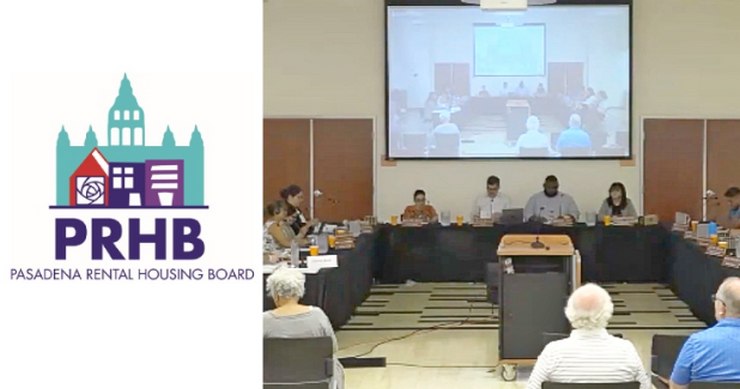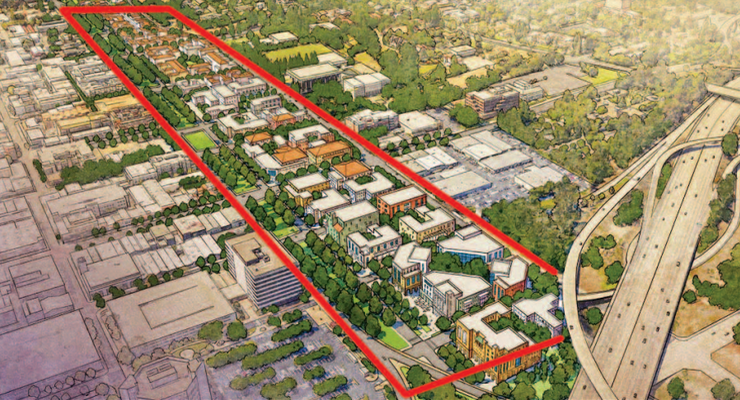
An ambitious LA County plan to remove up to 2. 4 million cubic yards of sediment from the Devil’s Gate Dam above Altadena drew a concerned crowd of more than 75 locals to Jackson Elementary School for a public meeting with County officials Wednesday evening.
An unofficial show-of-hands survey, in fact, showed that approximately 65 percent of the audience was against the project. When similarly questioned as to how many were in favor of the project, only three hands went up.
The multi-year plan would eliminate certain native habitat areas, but replace and rejuvenate them by removing non-native plants that are already clogging and affecting the natural areas around the dam, and re-growing native plant species.
According to a presentation by Keith Lilley, Senior Civil Engineer at the Water Resources Division of LA County Public Works, the plan is necessary, because the Los Angeles Basin is naturally vulnerable to flooding.
As Lilley explained, the Los Angeles County Flood Control District was created in 1915 after a disastrous LA-area flood took a heavy toll on lives and property. The mission of the District is to “reduce flood risk by providing flood control protection and to conserve water for regional supply,” he said.
Following the 2009 Station Fire, Lilley said, 1.3 million cubic yards of additional sediment entered Devil’s Gate Reservoir and now the reservoir does not have adequate capacity for a major storm event, or what he termed a “50-Year Storm” event. Should such a storm occur, LA County Public Works estimates that flooding would occur along the portions of the Arroyo Seco in Pasadena, South Pasadena, and Los Angeles, impacting approximately 650 parcels and requiring closure of the 110 Freeway from Orange Grove Avenue to the 5 Freeway.
But local activists seemed unconvinced that the project was necessary, or that it would not harm or eliminate local species. Residents of the area who called the project “The Big Dig,” were concerned about the multi-year project’s impact on the local animal and plant habitat — especially endangered birds — as well as the impact of trucks and traffic on the nearby community.
“Mother Nature has been in quality control and product development for millions of years longer than we have,” said biologist Lori Paul, a local resident who is opposed to the project. “We’re paying millions of dollars to take out accumulated sediment here, when we are also paying millions of dollars to truck in sediment down at our beaches… This is absurd. The system of the mountains is supposed to work by bringing sediments down and sluicing them in various sizes to form stream sites and riparian habitats all the way down to the beach.”
Paul added, “A Fifty-Year storm event would be an unexpected catastrophe because of bad land management. We have had 75 to 100 years of bad land management, allowing people to build in these areas that are in flood plains and areas that are channelized all the way down to the sea, and thats why the LA River is in concrete.”
Other residents took issue with an assertion by Mari Quillman, Principal Biological Resources Program Manager for the project, that the Least Bell’s Vireo — a federally protected songbird — would not be harmed during the project. David Banuelas of The Arroyo Seco Foundation, a conservation group, claimed that the project would destroy habitat crucial for survival of the Vireo, and that “implementation of the District’s Big Dig program will be a devastating blow to the resurgent population of this endangered species.”
The current sediment in the dam is being dug out regularly so that it doesn’t reach a level that blocks drainage valves, he said. The plan would allow for the removal of up to 800,000 cubic yards of sediment a year.
The removal of so much dirt from the dam area would require up to 400 truck trips a day through local neighborhoods, from 7 a.m. to 3:30 p.m, during a “season” from April through October, depending on the weather. Should the weather be drier, the trucks would continue to transport dirt through November.
As L.A. County Public Works Public Affairs Manager Kerjon Lee clarified, a single truck going into the site and then leaving later, counts as two trips. He also estimated that the project would take three to five “seasons” to complete.
The project site or “Permanent Maintenance Area” would utilize only 52 acres of the reservoir’s 258 total acres, said biologist Quillman.
According to Quillman, over 70 acres of native habitat would be created and restored within the reservoir area, which is consistent with Hahamongna Master Plan. An additional 11 acres of native habitat would be planted on side slopes. The project would also preserve all official walking and equestrian trails.
The next steps for the project, according to the Wednesday evening presentation, are to finalize construction plans and necessary permits, seek Board of Supervisor approval to advertise and award the construction contract. County Public Works would then hire a contractor and meet with the contractor publicly before beginning construction construction in 2017.













 0 comments
0 comments


